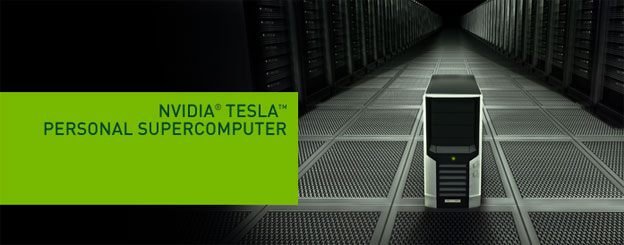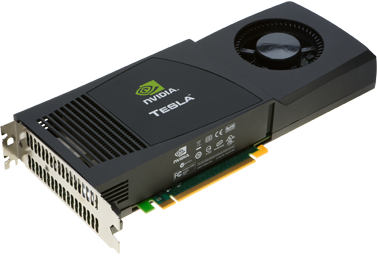 SSD modules are quickly becoming the talk of the town. This is a quick, moving market, where leadership is a very completive position. Performance, density and pricing is a daily moving target.
SSD modules are quickly becoming the talk of the town. This is a quick, moving market, where leadership is a very completive position. Performance, density and pricing is a daily moving target.
A solid-state drive (SSD) is a data storage device that uses solid-state memory to store persistent data. A SSD emulates a hard disk drive interface, thus easily replacing it in most applications. An SSD using SRAM or DRAM (instead of flash memory) is often called a RAM-drive.
The original usage of the term solid-state (from solid-state physics) refers to the use of semiconductor devices rather than electron tubes, but has in this context been adopted to distinguish solid-state electronics from electromechanical devices as well. With no moving parts, solid-state drives are inherently less fragile than hard disks and therefore also silent (unless a cooling fan is used); as there are no mechanical delays, they usually enjoy low access time and latency.
SSDs have begun to appear in laptops, although they are at present substantially more expensive per unit of capacity than hard drives.
An SSD is commonly composed of either DRAM volatile memory or NAND flash non-volatile memory.
Flash based
Most SSD manufacturers use non-volatile flash memory to create more rugged and compact devices for the consumer market. These flash memory-based SSDs, also known as flash drives, do not require batteries. They are often packaged in standard disk drive form factors (1.8-inch, 2.5-inch, and 3.5-inch). In addition, non-volatility allows flash SSDs to retain memory even during sudden power outages, ensuring data persistence. Up to the fall of 2008 flash SSDs were significantly slower than DRAM (and even traditional HDDs on big files), but still perform better than traditional hard drives (at least with regard to reads) because of negligible seek time (flash SSDs have no moving parts, and thus eliminate spin-up time, and greatly reduce seek time, latency, and other delays inherent in conventional electro-mechanical disks).
Micron/Intel SSD made faster flash drives by implementing data striping (similar to RAID0) and interleaving. This allowed creation of ultra-fast SSDs with 250 MB/s effective read/write - the maximum SATA interface can really manage.
DRAM based
SSDs based on volatile memory such as DRAM are characterized by ultra fast data access, generally less than 0.01 milliseconds, and are used primarily to accelerate applications that would otherwise be held back by the latency of Flash SDDs or traditional HDDs. DRAM-based SSDs usually incorporate internal battery and backup storage systems to ensure data persistence while no power is being supplied to the drive from external sources. If power is lost, the battery provides power while all data is copied from random access memory (RAM) to back-up storage, or to allow the data's transfer to another computer. When the power is restored, the data are copied back to RAM from the back-up storage, and the SSD resumes normal operation. (Similar to the hibernate function used in modern operating systems.)
These types of SSD are usually fitted with the same type of DRAM modules used in regular PC's and servers, allowing them to be swapped out and replaced with larger modules.
A secondary computer with a fast network connection can be used as a RAM-based SSD.
DRAM based solid-state drives are especially useful on computers that already have the maximum amount of supported RAM. For example, some computer systems built on the x86-32 architecture can effectively be extended beyond the 4 GB limit by putting the paging file or swap file on an SSD. Owing to the bandwidth bottleneck of the bus they connect to, DRAM SSDs cannot read and write data as fast as main RAM can, but they are far faster than any mechanical hard drive. Placing the swap/scratch files on a RAM SSD, as opposed to a traditional hard drive, therefore can increase performance significantly.
- Faster start-up, as no spin-up is required (RAM & Flash).
- Typically, fast random access for reading, as there is no read/write head to move (RAM & Flash).
- Extremely low read latency times, as SSD seek-times are orders of magnitude lower than the best current hard disk drives. (RAM) In applications where hard disk seeks are the limiting factor, this results in faster boot and application launch times.
- Extremely fast write (RAM, nearly the same for best modern flash).
- No noise: a lack of moving parts makes SSDs completely silent, unless, as in the case of some high-end and high-capacity models, they have cooling fans attached (RAM & Flash).
- High mechanical reliability, as the lack of moving parts almost eliminates the risk of mechanical failure (RAM & Flash).
- Ability to endure extreme shock, high altitude, vibration and extremes of temperature: once again because there are no moving parts. This makes SSDs useful for laptops, mobile computers, and devices that operate in extreme conditions (Flash).
- Relatively deterministic read performance: unlike hard disk drives, performance of SSDs is almost constant and deterministic across the entire storage. This is because the seek time is almost constant and does not depend on the physical location of the data, and so, file fragmentation has almost no impact on read performance.
- For low-capacity SSDs, lower weight and size: although size and weight per unit storage are still better for traditional hard drives, and microdrives allow up to 20 GB storage in a CompactFlash 42.8×36.4×5 mm (1.7×1.4×.2 in) form-factor. Up to 256 GB, SSDs are currently lighter than hard drives of the same capacity.
- When failures occur, they tend to occur either 'on write', or 'on erase', rather than 'on read'. With traditional HDDs, failure tends to occur 'on read'. If the drive detects failure on write, data can be written to a new cell without data loss occuring. If a drive fails on read, then data is usually lost permanently.
- Cost – as of mid-2008, SSD prices are still considerably higher per gigabyte than are comparable conventional hard drives: consumer grade drives are typically US$2.00 to US$3.45 per GB for flash drives and over US$80.00 per GB for RAM-based compared to about US$0.38 per gigabyte for hard drives.
- Capacity – currently far lower than that of conventional hard drives (Flash SSD capacity is predicted to increase rapidly, with experimental drives of 1 TB, hard drive capacity also continues to expand, and hard drives are likely to maintain their capacity edge for some time.)
- DRAM based SSDs have a higher vulnerability to abrupt power loss.
- Limited write (erase) cycles – flash-memory cells will often wear out after 1,000 to 10,000 write cycles for MLC, and up to 100,000 write cycles for SLC, while high endurance cells may have an endurance of 1–5 million write cycles (many log files, file allocation tables, and other commonly used parts of the file system exceed this over the lifetime of a computer). Special file systems or firmware designs can mitigate this problem by spreading writes over the entire device (so-called wear levelling), rather than rewriting files in place. In 2008 wear levelling was just beginning to be incorporated into consumer level devices.
- Slower write speeds – as erase blocks on flash-based SSDs generally are quite large (e.g. 0.5 - 1 megabyte), they are far slower than conventional disks for random writes and therefore vulnerable to write fragmentation, and in some cases for sequential writes. SSDs based on DRAM do not suffer from this problem.
- Lower storage density – hard disks can store more data per unit volume than DRAM or flash SSDs, except for very low capacity/small devices.
- Higher power consumption – at idle or under low workloads laptop battery runtimes decrease when using an SSD over a 7200 RPM 2.5" laptop hard drive, flash drives also take more power per gigabyte.
- Larger range of operating temperatures. Typical hard drives have an operating range of 5-55 degrees C. Most flash drives can operate at 70 degrees, and some industrial grade drives can operate over an even wider temperature range.
- RAM based SSD require more power than hard disks, when operating; and they still use power when the computer is turned off, while hard disks do not.
Cost and capacity
Until recently, solid-state drives were too costly for mobile computing. As flash manufacturers transition from NOR flash to single-level cell (SLC) NAND flash and most recently to multi-level cell (MLC) NAND flash to maximize silicon die usage and reduce associated costs, "solid-state disks" are now being more accurately renamed "solid-state drives" – they have no disks but function as drives – for mobile computing in the enterprise and consumer electronics space. This technological trend is accompanied by an annual 50% decline in raw flash material costs, while capacities continue to double at the same rate. As a result, flash-based solid-state drives are becoming increasingly popular in markets such as notebook PCs and sub-notebooks for enterprises, Ultra-Mobile PCs (UMPC), and Tablet PCs for the healthcare and consumer electronics sectors. Major PC companies have now started to offer such technology.
ApplicationsA use for flash drives is to run lightweight operating systems designed specifically for turning general-purpose PCs into network appliances comparable to more expensive routers and firewalls. In this situation, a write protected flash drive containing the whole operating system is used to boot the system. A similar system could boot from CD, floppy disk or a traditional hard drive but flash memory is a good choice because of very low power consumption and failure rate.
Hybrid driveA hybrid disk uses a small SSD as a buffer for a larger drive. DRAM-based SSDs may also work as a buffer cache mechanism. When data are written to memory, the corresponding block in memory is marked as dirty, and all dirty blocks can be flushed to the actual hard drive based on the following criteria:
- Time (e.g., every 10 seconds, flush all dirty data);
- Threshold (when the ratio of dirty data to SSD size exceeds some predetermined value, flush the dirty data).
- Loss of power/computer shutdown.
SSDs and Microsoft WindowsWindows is optimized for hard disk rather than flash based storage. Part of the slowdown may be because hard disks handle data in smaller chunks (e.g. 0.5KB), whereas flash drives use larger page sizes (e.g. 4KB). The factors that reduce the speed include the fact that Windows uses larger files, as well as the fact that Windows' background services constantly access the disk.
Sources :
- Wikipedia:Solid-state drive.
- Various Sources.
 SpyForge, a leading online company in spy gadgets launches a phenomenal 4GB Spy Pen Camera with high video and audio quality.
SpyForge, a leading online company in spy gadgets launches a phenomenal 4GB Spy Pen Camera with high video and audio quality.









